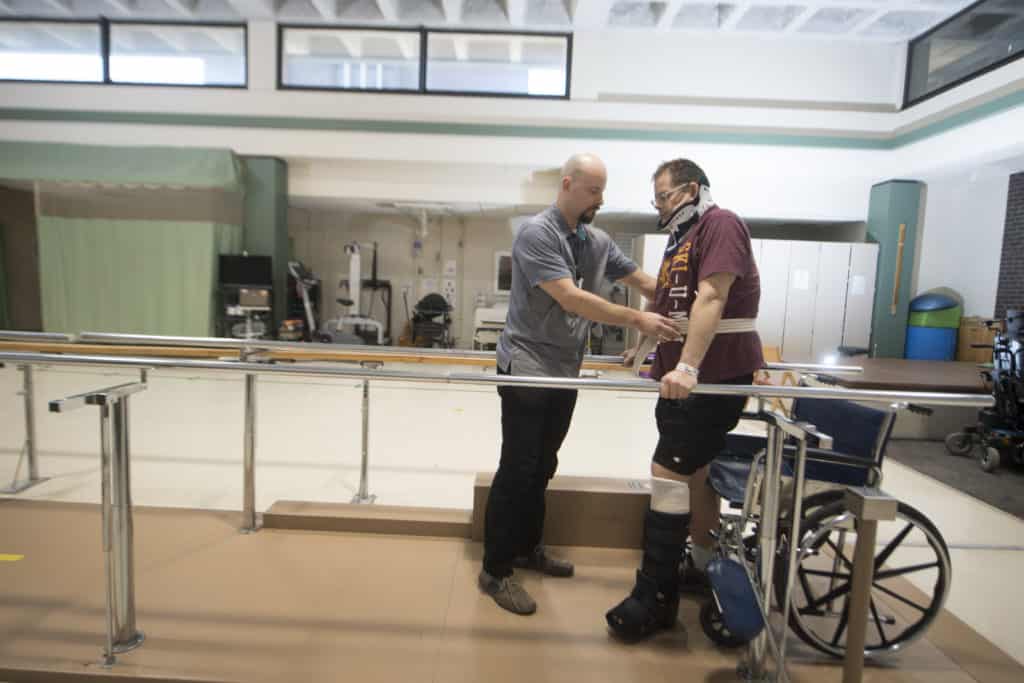


This objective may be accomplished through a voluntary review of potential and existing trauma centers so that trauma centers may provide an organized and systemic approach to the care of the injured patient.” This verification process, which is administered by the Verification, Review, and Consultation (VRC) Program, is designed to help hospitals improve trauma care. As stated in its mission, the verification process intends “To create national guidelines for the purpose of optimizing trauma care in the United States. Beginning in 1987, the ACS COT began a program to verify hospitals in the United States that meet the criteria outlined to be a successful trauma center. With this charge, the ACS COT first published criteria in 1976 as to the standards needed, both in resources and personnel, for the optimal care of the trauma patient at a designated trauma center. The ACS COT was founded in 1922 and has grown into an organization that focuses on a multidisciplinary approach to the care of the trauma patient at the local and national level. The ACS COT is the national entity that focuses on improving the care of the injured patient. The leadership of the ACS COT has made great progress in achieving the reality of a national trauma system, but until such a national system is established, the current responsibility of coordinating a trauma system and the process of how a medical center is designated a trauma center varies in each state and is outlined through legislative or regulatory authority. The ACS COT has developed a coalition to implement the National Academy of Sciences, Engineering and Medicine's 2016 report entitled, A National Trauma Care System: Integrating Military and Civilian Trauma Systems to Achieve Zero Preventable Deaths After Injury. Efforts to establish a national trauma system are being led by the American College of Surgeons Committee on Trauma (ACS COT). 2 Trauma systems in the United StatesĬurrently in the United States, there is neither a unified national trauma system nor is there a national standard defining how a trauma center becomes designated as such despite evidence that demonstrates better outcomes and coordination of care. In this article, the composition of trauma systems and the practical delivery of this care will be presented for North America. In the United States, most isolated fractures can be treated by an orthopaedic surgeon with experience in fracture care, but patients with multiple fractures, fractures associated with other system injuries, complex fractures such as pelvic, acetabular, or fractures with a significant soft tissue injury are more appropriate candidates for musculoskeletal trauma care in a higher level trauma center. Around 16,000 Canadians die every year from trauma (about 43 per day) making it the number one killer for people under 45 in this country. It is estimated that >50% of hospitalized trauma patients have one or more musculoskeletal injuries. Trauma is a very common occurrence because these countries are highly industrialized and there is a plethora of private transportation. North American trauma systems are incredibly critical for the care of injured patients yet they vary greatly across the United States and Canada. Although each trauma system has opportunities for improvement, they both provide effective access and quality care to the vast majority of injured patients. Trauma centers are classified according to their capabilities from level I (highest ability) to level IV. Population dense areas offer rapid admission to well-developed trauma centers, but injured patients in remote areas may have challenges regarding access. Both Canada and the United States utilize efficient prehospital care, and both countries recognize that postdischarge care is a financial challenge to the system.
INTERNATIONAL TRAUMA CENTER LEVELS FREE
Although many states use the criteria developed by the American College of Surgeons Committee on Trauma, the individual agencies are free to utilize their own verification standards. In the United States, trauma centers are specifically verified by the individual states and thus there tends to be more variability across the country. Comparatively, the Canadian trauma system is more unified, and approximately 80% of Canadians live within 1 hour of a level I or II center. North American trauma systems are well developed yet vary widely in form across the continent.


 0 kommentar(er)
0 kommentar(er)
